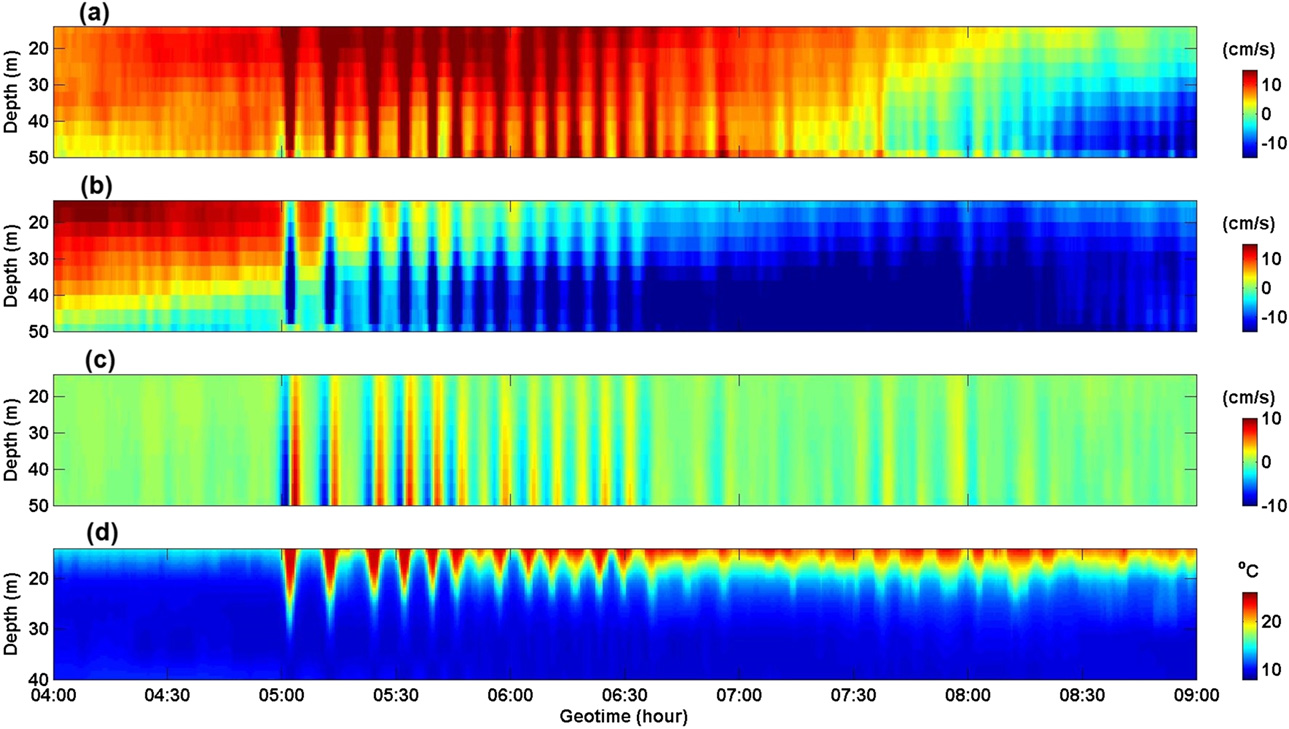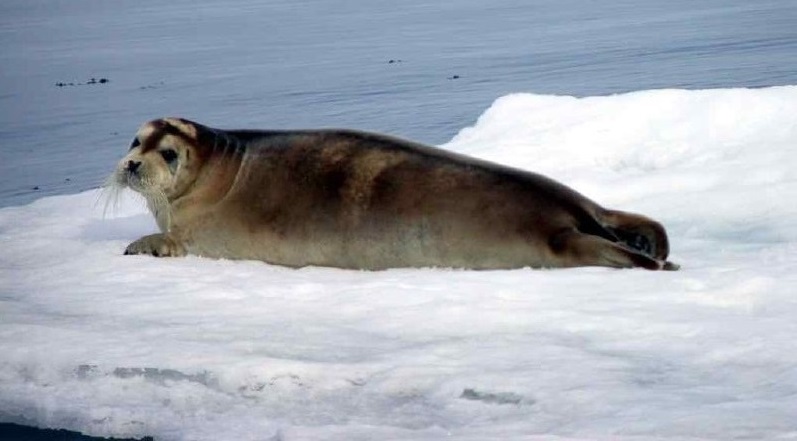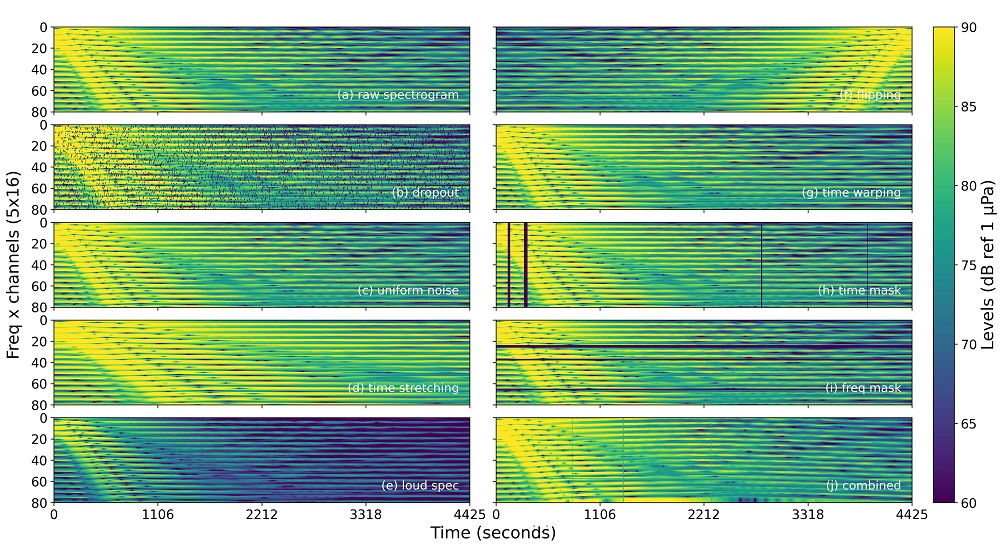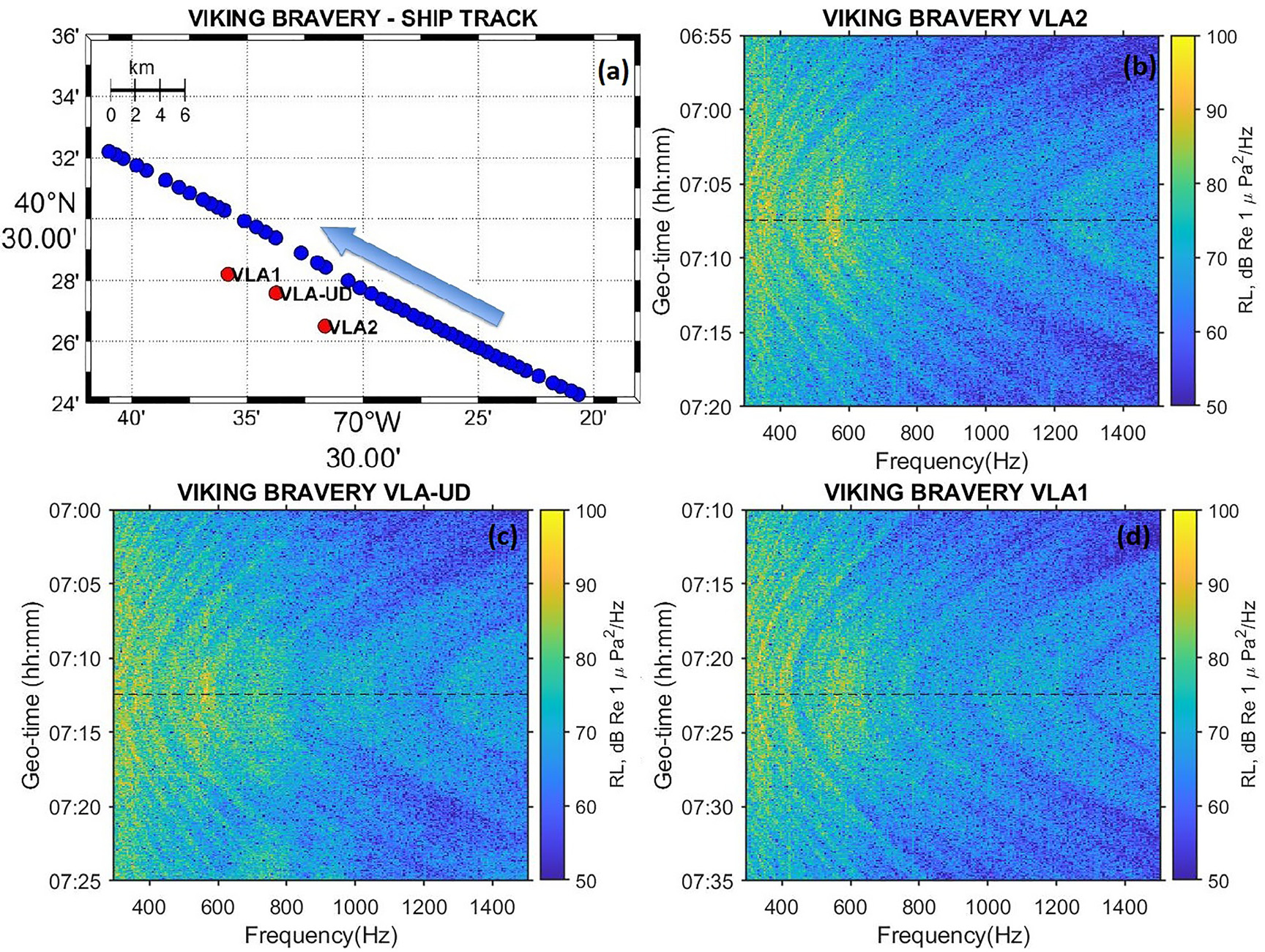Research Dictionary learning
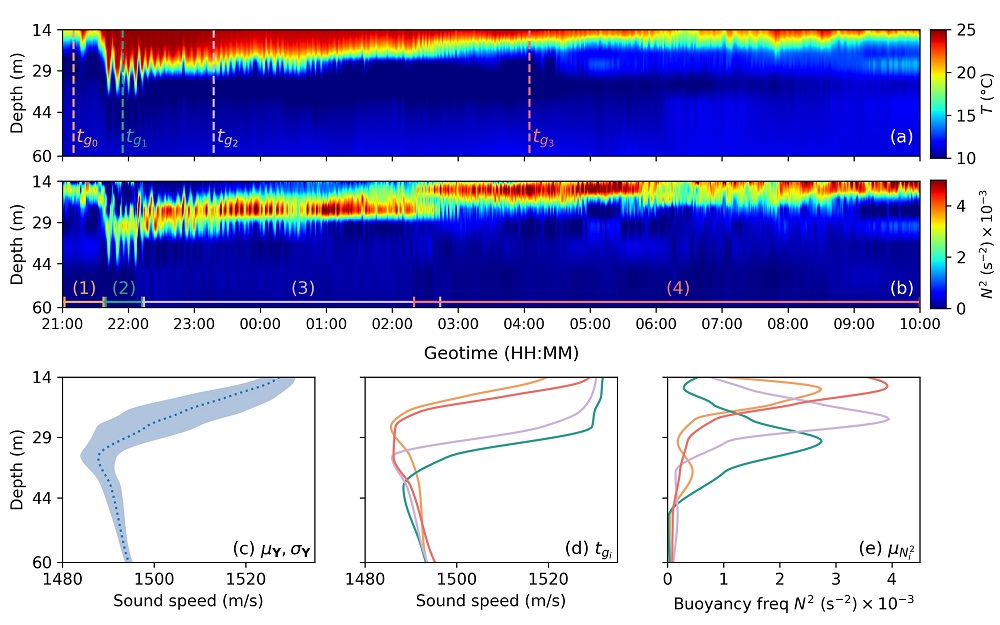
Abstract
The presence of internal waves (IWs) in the ocean alters the isotropic properties of sound speed profiles (SSPs) in the water column. Changes in the SSPs heavily affect underwater acoustics since most of the energy is dissipated into the seabed due to the downward refraction of sound waves. In consequence, variations in the SSP must be taken into account when modeling acoustic propagation in the ocean. Regularly, empirical orthogonal functions (EOFs) are employed to model and reconstruct SSPs using a linear combination of basis functions that capture the sound speed variability. A different approach is to use dictionary learning (DL) to obtain a learned dictionary (LD) that generates a non-orthogonal set of basis functions (atoms) that form a better sparse representation. In this paper, a comparison is made between the ability of EOFs and LDs to reconstruct and classify SSPs affected by the passing of IWs. Both LDs and EOFs are generated and tested using data collected from the shallow water experiment 2006. Results show that LDs yield lower reconstruction error compared to the EOFs using few basis functions when IW activity was detected. In addition, overcomplete LDs showed to be a robust method to classify SSPs during low, medium, and high IW activity. Thus, LDs provide sparser representations of SSPs and are suitable for the classification and detection of internal waves in the ocean.
The transition of internal waves over the area caused highly anisotropic SSPs as shown in the video, where temperature profiles exhibited significant variations across the water column and caused notable changes in both the acoustic channel and the sound transmission. The study of IWs is a difficult task due to the spatial resolution of the measurements in the experiment area. Here, only temporal IW anomalies are used for the analyses. The temporal displacement of an internal wave event spotted from 17 Aug 21:00:00 to 18 Aug 10:00:00 UTC 2006 at SW54 location during the SW06 experiment is presented below.
Dictionary atoms are compared with empirical orthogonal functions to reconstruct sound speed profiles (SSPs). Atoms in a dictionary $\textbf{D}$ are not required to be orthogonal are restricted to have unit $\ell_2$-norm while EOFs $\textbf{Q}$ are orthonormal. Coherence among column entries in the DL and EOFs are calculated by computing the Gram matrix $\textbf{G}_\textbf{A}=\lvert \textbf{A}^T \textbf{A}\lvert$.
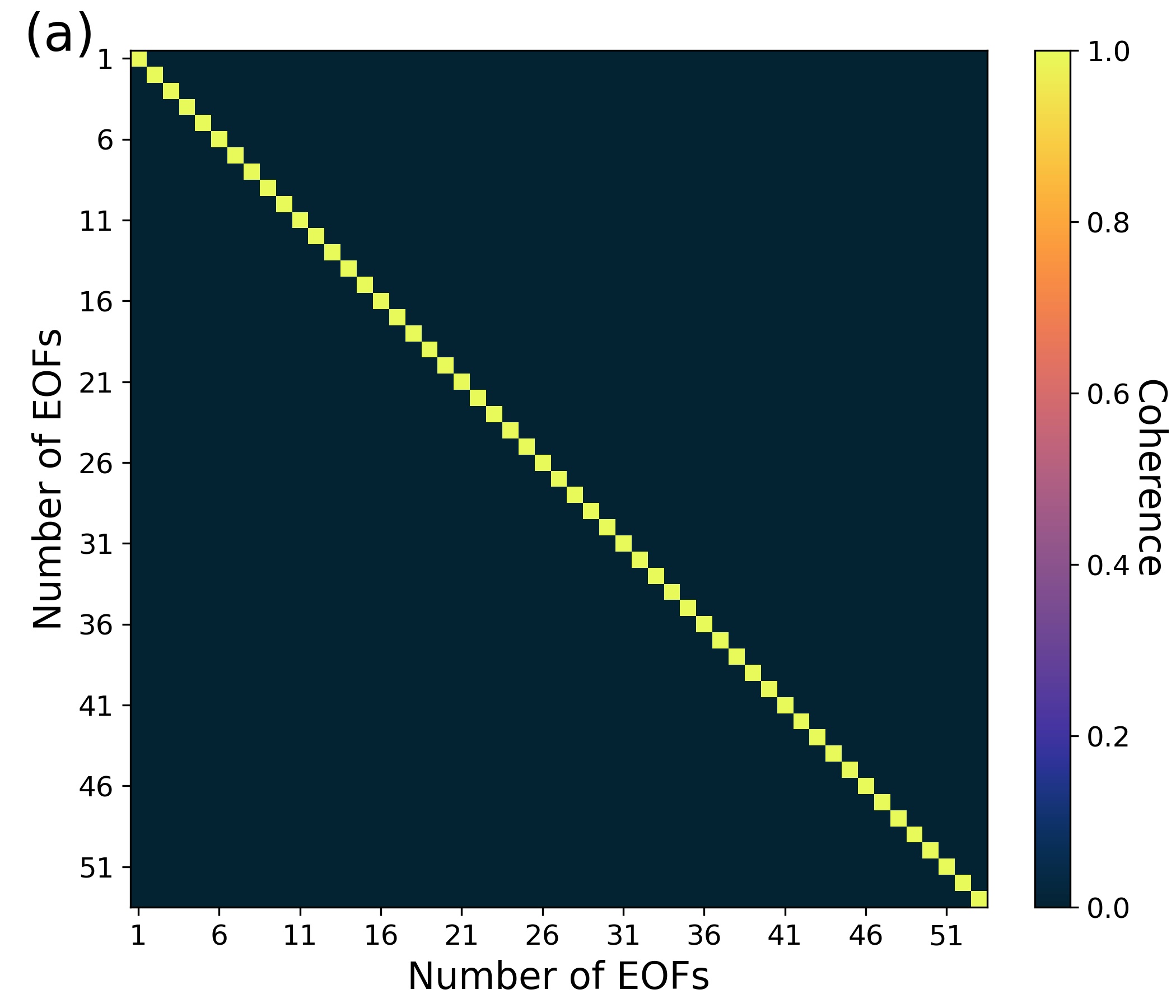
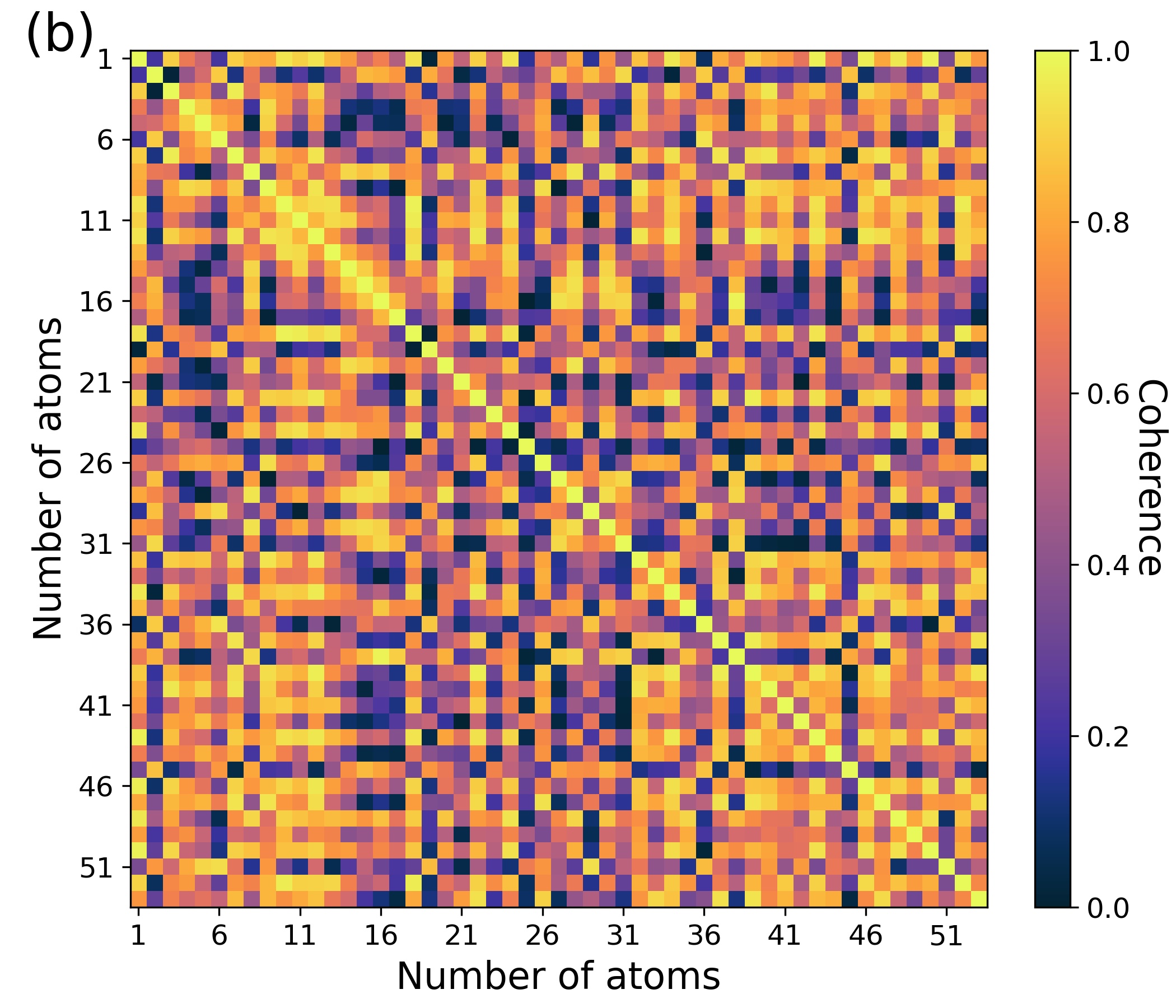
For SSPs reconstruction, DL shows to be more robust than EOFs. DL retains more useful information from the SSPs in terns of depth than EOFs as shown below. Notice only the leading-order EOFs capture the variability of SSPs, whereas the SSP variance is distributed on all atoms.
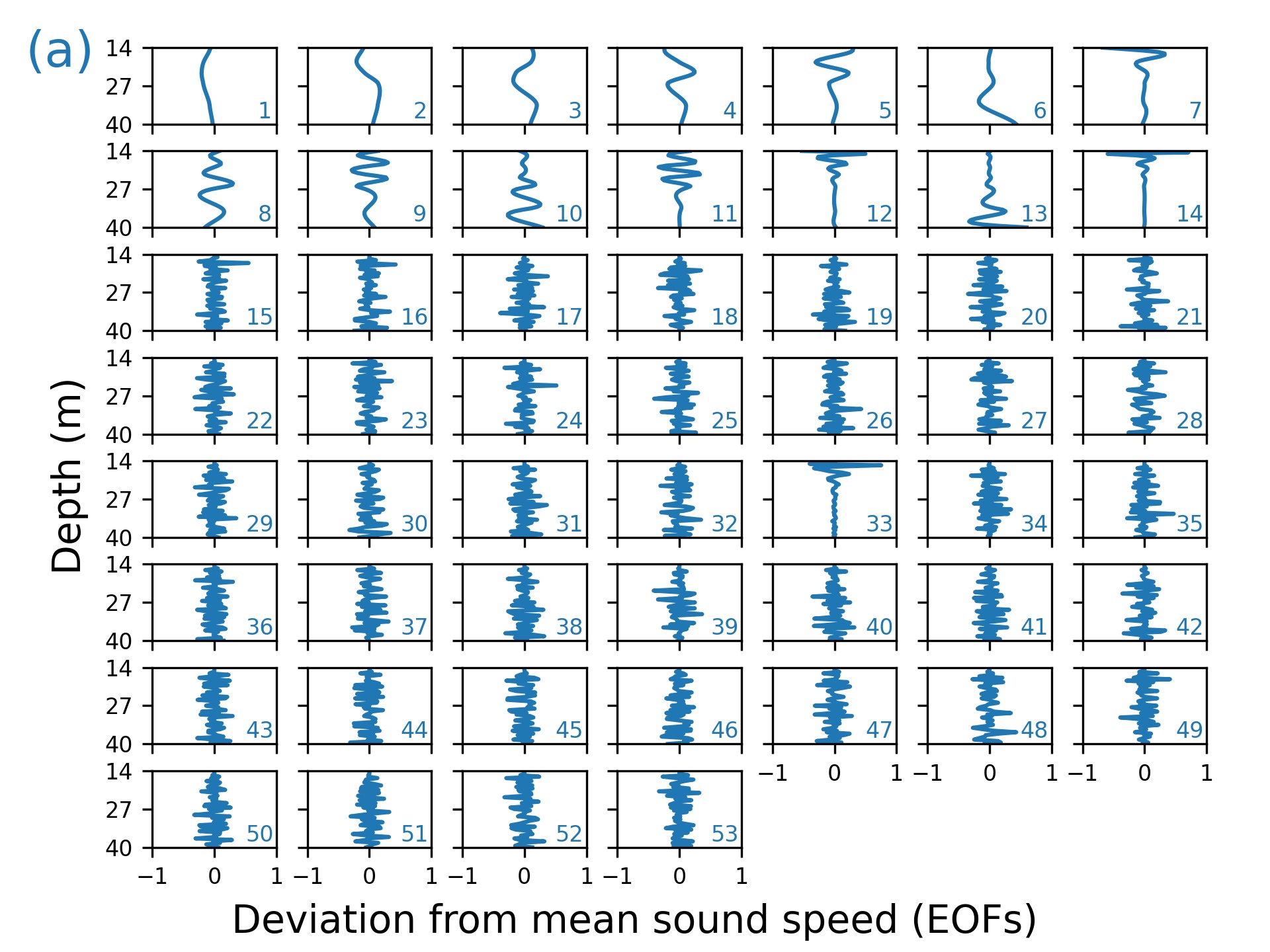
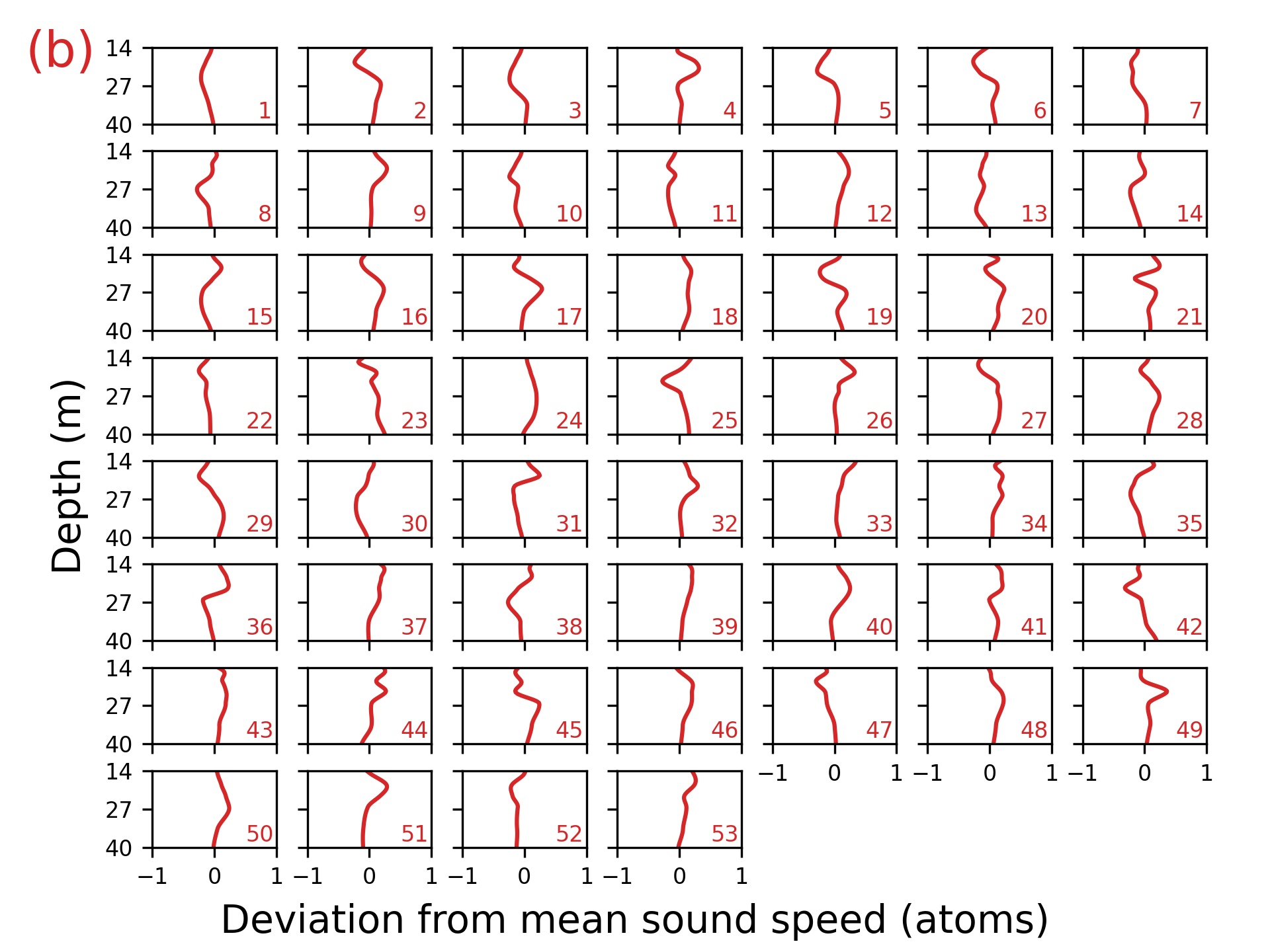
Both dictionary learning and empirical orthogonal functions (EOFs) were implemented to reconstruct SSPs disturbed by the passing of internal waves collected from the SW06 experiment. Due to their redundant nature and their ability to generate non-orthogonal basis functions, overcomplete learned dictionaries (LD) showed better performance for reconstructing SSPs than the EOFs and the complete LD when using the best $n_{\textrm{nz}}=3$ combination of basis functions.
Related publications
-
Supervised Classification of Sound Speed Profiles Via Dictionary Learning
Jhon A. Castro-Correa, Stephanie A. Arnett, Tracianne B. Neilsen, Lin Wan, and Mohsen Badiey. DOI: 10.1175/JTECH-D-21-0090.1. [PDF]
